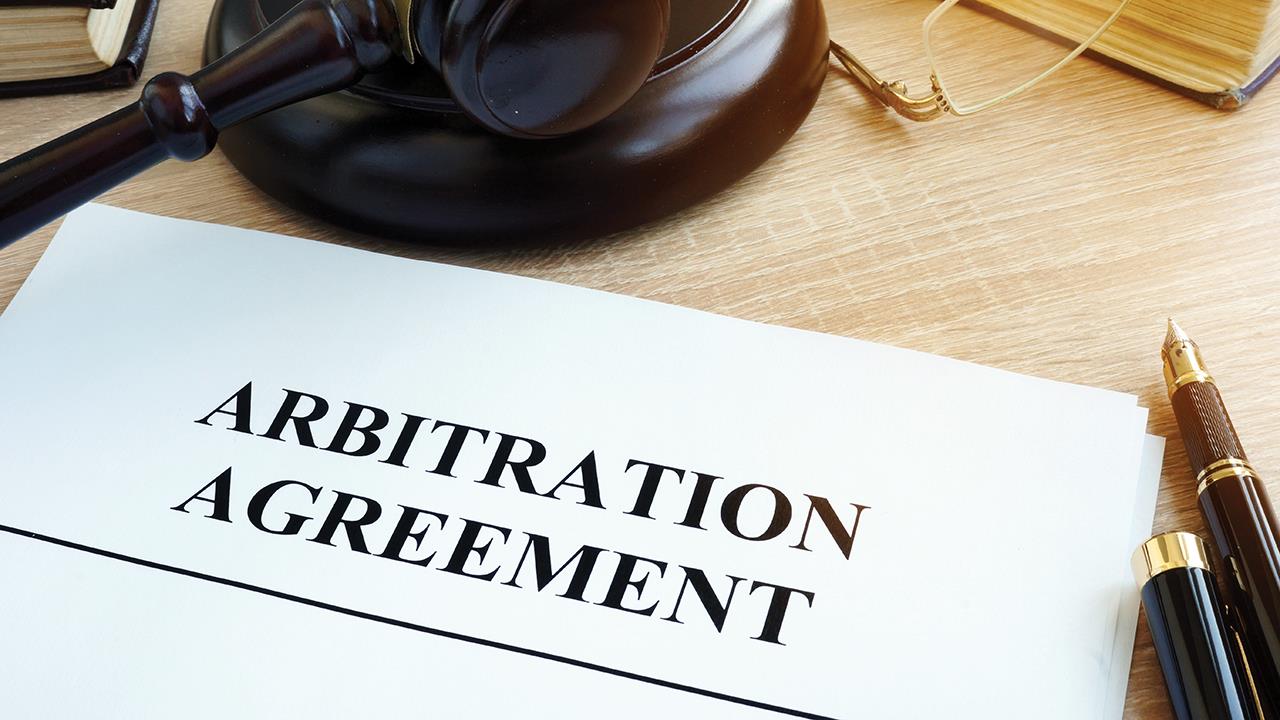

It’s very easy for disputes to arise and for matters to escalate to the courts. However, arbitration is a route to resolving issues quickly and at lower cost while maintaining a working relationship with a customer.
In essence, arbitration is a dispute resolution process where the parties agree that an impartial and independent third party – the arbitrator – will determine the outcome of a dispute based on the issues presented. The arbitrator’s decision is final and binding.
Make provision for arbitration
It should be said that there is no automatic right to go to arbitration unless it’s included in agreements between all relevant parties. Contracts often detail how disputes are to be resolved. But even if the process is not formally documented, either side can seek an arbitration agreement after a dispute has arisen.
In making provision for arbitration, parties agree to refer any dispute to a neutral tribunal to decide the outcome. Arbitration is not to be confused with mediation or conciliation; these processes only offer suggested outcomes and are non-binding. With arbitration, in contrast, the tribunal has the power to make binding decisions.
The first step in setting up the process is the creation of an arbitration agreement which determines key elements of how disputes will be resolved. Consideration needs to be given to the composition of the tribunal, how arbitrators are chosen, where arbitration will be heard, and the rules of the process. Decisions made here will determine the time span and cost of the arbitration.
While arbitration may offer a simpler route to an outcome, those in dispute should still consider the chances of successful enforcement.
Understand the process
As arbitration is a contract-based mechanism, the contract may detail how the process is to be started – for example, meetings between senior management have to be held first to attempt a resolution before the formal process can begin.
If no solution is apparent, one side may start the arbitration process by sending a ‘request for arbitration’ or a ‘notice to arbitrate’ to other parties. Whichever institution is used as the arbitrator, it will have rules that determine the details to be included in that documentation. The respondent to the claim will then have the opportunity to respond briefly within a set period of time.
As to what happens next, the tribunal must be formally constituted, and arbitrators officially chosen. If there are to be three arbitrators in a two-party dispute, each party will select one arbitrator. The institution will select a third as chair. But if there is to be one arbitrator, the agreement or the institution’s rules may determine who is chosen.
Regardless, it’s important to identify the key issues that are in dispute, whether it’s a matter of law, fact, or money due/owed. Also, the process and timetable must be agreed between the parties and the tribunal.
How arbitration is conducted
The arbitration process works according to agreed procedures and normally involves written submissions from all sides. It’s likely that written witness statements and reports of technical experts may also be needed.
As in court cases, parties will provide documents to the other side and the tribunal. These will include both documents they rely upon and those that the other side has requested. Before these documents are provided, it is recommended that legal advice is taken to understand the obligations to provide and the impact of doing so.
Arbitration itself often involves several hearings before the tribunal where each side’s lawyers put forward their position and question witnesses and experts. It should be remembered that the process can take time – months – to complete if the issues are complex. Equally, it can be completed in half a day if it’s a simple matter.
Consider the consequences
It follows that after the hearing, the tribunal will announce its award with detail on its decisions on the issues. The decision will determine the rights and obligations of either side.
The award can be challenged and appealed, and the grounds for doing so will depend on, for example, the arbitration agreement and the institution’s own rules.
A tribunal’s findings of fact can rarely be challenged, but if there’s been any chance of improper conduct – reference to issues outside of the claim, a misunderstanding of the law – the matter can be sent to law for a revised decision or an order for the tribunal to reconsider the matter appropriately.
It should be noted that one of the main attractions of arbitration is that awards can often be enforced (in most countries worldwide) quickly and without the matter being reheard. However, consideration does need to be given to enforcement with attention paid to the jurisdiction in which enforcement is likely to be sought, the status of the party against whom enforcement is sought, and whether it’s possible to enforce before the other side puts assets beyond reach.
Arbitration has a distinct part to play in the dispute resolution process. But before it is used, good legal advice should be taken to understand the process, risks, and chances of success.
If you'd like to keep up-to-date with the latest developments in the heating and plumbing industry, why not subscribe to our weekly newsletters? Just click the button below and you can ensure all the latest industry news and new product information lands in your inbox every week.